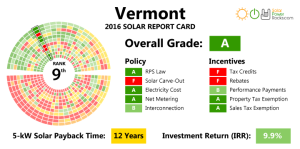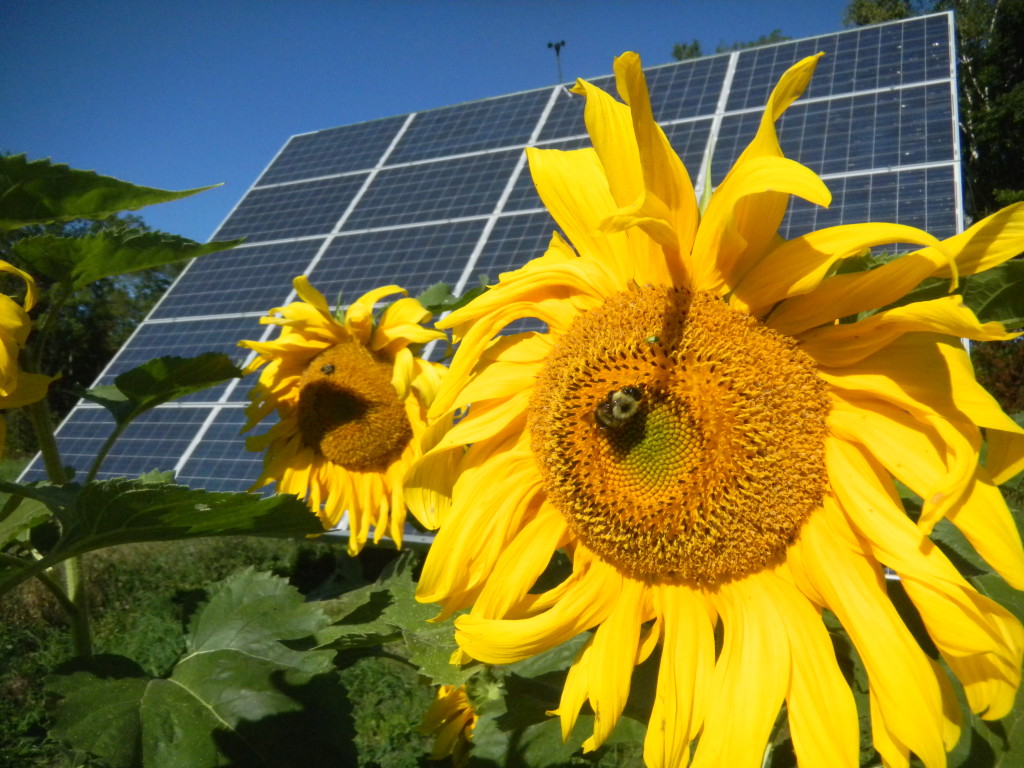Vermont was recently ranked ninth in the nation in a state-by-state solar power ranking.
Solar Power Rocks is an organization committed to “giving homeowners a clear picture of the policy, incentives, and investment returns on local solar panel installations.” Their rankings provide a comprehensive analysis of each state’s record on solar, and their various efforts to make solar power more available and affordable for its residents.
In light of recent progress on our solar build-out, Vermont’s 2016 Solar Report Card gives the state an overall “A” grade. The “A” grade is given based on solar policies, incentives, and other factors. Most of these point to major successes we’ve had on renewable energy recently, and some indicate that we still have work to do.
The 2016 Solar Report Card credited Vermont with passing the second-highest mandatory renewable portfolio standard in the nation, requiring that the state produce 75% of its energy renewably by 2032.
The report also acknowledges the particular financial benefit for individuals going solar in Vermont because of the already high price of energy in the region. This allows solar customers to bank additional savings that would not be seen in states with cheaper (and typically dirtier) energy.
One area where Vermont was given an “F” ranking was in the category “Solar Carve-out,” which refers to how much solar is required of utilities in a state’s renewable energy portfolio. Vermont does in fact require solar in its portfolio, through a “distributed generation” carve-out that is functionally similar to a solar-carve out. Environment America recently described our distributed generation requirement as “the most aggressive in the country,” so the “F” grade seems a bit unfair in this case.

Another area where Vermont received a poor grade was in the “Tax Credits” and “Rebates” categories. In Vermont, the financial incentives for solar customers are achieved through the net metering program by compensating solar electricity at a higher rate than conventional fossil-fuel based electricity. However, over the past year, changes proposed to the net metering law have threatened the compensation for solar customers, which is a big part of what makes the program so successful.
Last June, VPIRG highlighted the benefits of this part of the net metering rules in our comments to the Public Service Board. “The existing rate structure has been an effective driver of small scale, renewable, distributed energy development.” VPIRG went on to request that the PSB craft a forward-looking program that will support “Vermont’s and Vermonters’ ability to transition away from fossil fuels and towards distributed, renewable generation, and to enable the state to meet its energy and greenhouse gas goals.”
When it comes to our state’s renewable energy policies, net metering stands as one of the most successful programs, and VPIRG has worked hard to ensure that it stays that way.
This report serves as another indication that, in Vermont, we are getting it right on clean energy. It is encouraging and reaffirming to see our state among the top in the country in solar energy, but we must keep pushing for a clean energy future if we are to stay among the nation’s leaders in this growing sector of the economy.
Read the full report here via SolarPowerRocks.com:
https://solarpowerrocks.com/vermont/

